Airline Reservation Information System Capstone Project Document
Introduction
In science and technology, the need for enhancement is a continuing topic which triggers developments. That is seen in each ramification and the airline trade shouldn’t be an exemption. Airline reservation techniques have been first launched within the late 1950’s as comparatively easy standalone techniques to manage flight stock, preserve flight schedules, seat assignments and plane loading. At this time fashionable airline reservation techniques are complete suites of merchandise to offer techniques that help with a wide range of airline administration duties and repair customer needs from the time of preliminary reservation via completion of the flight.
The World Wide Web has turned into tremendously widespread over the past 4 years, and at present, a lot of the airways have made provision for online reservation of their flights. The Web has turned into a seriously useful resource for individuals in search of making reservations online without the trouble of meeting travel agents by implementing an internet reservation system this ensures that reservation shouldn’t be solely generated by the airline personal employees but in addition by any travel agent utilizing a Global Distribution system or different airline which have a multilateral Interline Site visitors Settlement with the airline.
A Pc Reservations System is a computerized system used to store and retrieve info and conduct transactions associated to travel. Pc reservation techniques are categorized as Passenger Service Systems(PSS) which handles a collection of essential features for the airline. For an Airline, the reservation system is a mission-critical system that ought to use the newest state-of-the-art technology to offer for all flight reservations on a strong platform, which is versatile and might be tailored to any type of an airline. Safe and steady techniques are very important to the airline trade which is why firms spend a few years designing a structure particularly suited to the character of the airline trade which frequently requires tens of hundreds of customers to entry and uses the system concurrently.
Background of the Study
Rwenzori Airlines started as a small airline carrier in 1989 to facilitate air travel between Uganda and the Democratic Republic of Congo. This airline was to facilitate transportation of cargo between the two countries. The airline was originally designed to handle a small number of customers. In 1999 Rwenzori Airline was transformed into an International Airline facilitating travel of tens of thousands of passengers on a daily basis. Today Rwenzori Airlines still use a manual system of flight booking, flight management, and scheduling. Flight booking is done through travel agents across major towns, flight data and customer details are kept in manual files. This system is slow and results in booking conflicts, vacant seats in some planes and it is hard to quickly obtain customer information in case of an emergency. It‟s for this reason, the researcher set out to design an online airline reservation system to provides a modern, flexible reservation and inventory management solutions including call Centre, travel agency, internet engine, global distribution systems and interlines booking with a case study of Rwenzori Airlines.
Problem statement
The present system is manual, this technique is sluggish, time-consuming and it is extremely troublesome for every particular person to book by workplace brokers. Users inquire about the tickets through phones and it is very difficult for the user to remember all the details that they received through phones. It is vitally difficult to calculate what number of peoples registered and what number of seats on a specific airplane are vacant. This requires numerous time and wastage of cash because it requires a fairly lot of manpower to do.
Objectives
General Objective
To automate the method of airline ticket reservation, booking and airline administration, therefore, reduce errors ensuing from manual system operations.
Specific Objectives
- To check the present system figuring out its inefficiencies.
- To find out the necessities of the brand new system.
- To design a web-based airline reservation info system to facilitate on-line reserving and flight schedules.
- To implement the developed web-based airline info system.
- To check and validate the developed system by use of case examine.
Scope of the Study
The developed system will facilitate on-line reserving; hold customer information, gives a web-based menu on flight schedules, flight locations and their costs, present various hyperlinks to different companion airlines and may have a web page devoted to customer queries and replies. The system excludes catering for calculating workers wage and different administration points.
Significance of the Study
From the point of view of the airline; the system will present among other things the following;
Decrease repetitive work performed by the system administrator and reservation clerks. Keep consistency amongst totally different entry modes, e.g. by telephone, by Net, on the info desk, and throughout totally different bodily places. Keep customer info in case of emergency, e.g. flight cancellation on account of inclement climate. Decrease the variety of vacant seats on a flight and maximize flight capability utilization.
Reduce effort and frustration for travelers in scheduling a trip, particularly by lowering the search effort for the flight they should take. As well as, the end result of this examination will present a foundation for growing the suitable method to the issues related to air travel operations in relation to Airline Reservation Techniques.
Literature Review
Within the area of worldwide competitors, organizations all around the world are competing by way of using essentially the most complete and superior technological options. The commonest instance of innovation is within the space of data technology and communication. Numerous industries are utilizing technology and the developments in a software program and web to keep up and monitor their enterprise transactions. Within the software of the informative programs, the airline trade is essentially the most generally used system. This chapter explores the idea of reservation info system, their historical past, parts, sorts and their functions in a real-world scenario to unravel issues.
History of Airline Reservation Information System
American Airlines was the first to establish an automated booking system in 1946. Using a system to track information and improve efficiency was a highly appealing aim in the industry, and drew the attention of other airlines worldwide. The system endured years of development and alterations. Later, other airlines invested more in research and development to launch improved systems, and through the late 1960s and early 1970s, airlines established their own systems.
United Airlines developed the Apollo Reservation System, and shortly after allowed travel agents access. The Apollo system was the foundation for any further developments, which spread from just US airlines to European airlines as well. The research and development of the Airline Reservation System became a significant aspect of the industry and all its air carrier companies, and partnerships between airlines and technology gurus emerged.
Other airlines soon established their own systems. Delta Air Lines launched the Delta Automated Travel Account System ( DATA ) in 1968. United Airlines and Trans World Airlines followed in 1971 with the Apollo Reservation System and Programmed Airline Reservation System (PARS), respectively. Soon, travel agents began pushing for a system that could automate their side of the process by accessing the various Airline Reservation Systems directly to make reservations. Fearful this would place too much power in the hands of agents; American Airlines executive Robert Crandall proposed creating an industry-wide Computer Reservation System to be a central clearinghouse for the United States travels; other airlines demurred, citing fear of antitrust prosecution.
Airline deregulation occurred in 1978, magnifying the importance of computerized airline reservation systems and their accessibility. During the early 1970s, as travel agents pushed for access to reservation systems, and certain airline executives made investments for the sake of accessing the systems of other airlines, antitrust laws came into focus. The purpose of the 1978 Airline Deregulation Act in the United States was to eliminate government control over commercial aviation and ensure competitive behavior and fair business practices in the airline industry. Passengers could gain knowledge of market forces and new market entry in the industry. Information on specific airlines and the industry as a whole became more widely and readily accessible, evolving the airline reservation systems from “standalone” operations toward GDS. Today, airline reservation systems have developed into computerized reservation systems which are of mission critical to the airline industry, about six major airline reservations systems are used by international airlines.
Reservation Information Systems
The airline reservations system was one of the earliest changes to improve efficiency in the airline industry. Airline Reservation System finally evolved into the computer reservations system (CRS). Airline Reservations System (ARS) is a computerized system used to store and retrieve data and conduct transactions associated with air travel. The systems were originally designed and operated by airlines but were later extended for the use of travel agencies.
Major airline reservation system operations that book and sell tickets for multiple airlines are known as Global Distribution Systems (GDS). Airlines have divested most of their direct holdings to devoted GDS corporations, who make their programs accessible to shoppers by means of Web gateways. Modern Global Distribution Systems typically allow users to book hotel rooms and rental cars as well as airline tickets.
Global Distribution Systems(GDS) is a worldwide computerized reservation network used as a single point of access for reserving airline seats, hotel rooms, rental cars, and other travel related items by travel agents, online reservation sites, and large corporations. The premier global distribution systems are Amadeus, Galileo, Sabre, and Worldspan. They are owned and operated as joint ventures by major airlines, car rental companies, and hotel groups.

Reservation Information Systems
Components of Reservation Information Systems
These are full Data Expertise subsystems that make the reservation Data System operational; they’re suitable in nature and the failure of 1 element could have an effect on the operation of the others throughout the system. They include computer sources, information, individuals, and procedures used within the modern business enterprise.
Hardware
O’Brien (2001), defines hardware as particular person bodily units and materials utilized in info processing. Particularly, it contains not solely machines like computer systems but in addition information media i.e. all tangible objects on which information are recorded from sheets of paper to magnetic disks. Others embody keyboards, mouse, printers, scanners and many others.
Software
Rochester et al., (1996), assert that the software program contains all units of data processing directions and it contains various kinds of applications that allow them to hold out totally different duties. The software program is additionally categorized into system software program and Purposes software program. System software program is anxious about preserving the pc system working whereas Utility software program is a common objective or written for a selected activity like inventory management. It could be written utilizing a programming language or extra common objective piece of software program equivalent to a database.
Data
Rochester et al., (1996), defines data as all raw and unprocessed details that may readily be used. Cleary no database system can exist without data. The essential issue upon a corporations processing and knowledge wants are based. Knowledge parts and relationships have to be exactly outlined and the definitions have to be precisely recorded within the data dictionary.
People
According to O’Brien (2001), these are required for the operation of all info programs. They embody end-users and knowledge system specialists. Finish-users are individuals who use a Data System. The reservation info system specialists assist in the event and operation of the data system. They embody system analysts, programmers, computer operators and others. Persons are in all probability the element that almost all affect the success or failure of data programs.
Procedures
These are units of instruction about how to combine the above parts with the intention of the course of the data and generate the specified output. They include the way in which how to log on to the DBMS, use of various types and manipulations all through the project.
Database
Merril Wells, (2002) defines Database as a set of non-redundant information, which might be shared by totally different utility programs. Or database is a set of information in addition to applications required to handle that information. In response to Merril Wells, the significance of information has been apparent from time immemorial. Earlier than the arrival of computer systems, this was written in books or registers; these may very well be thought of as “manual” databases. Ever since computer systems had been launched as a method of sorting information, the idea and construction of a database have undergone a sea change. Database creation and upkeep is a gradual and steady process being influenced by system software program equivalent to database administration programs.
Database users state their necessities to the database utilizing the data definition languages (DDL) and the data manipulation languages (DML) through the database administration programs. The database administration system absolutely offers an interface between the user’s applications and contents of the database. Throughout the creation and subsequent upkeep of the database contents, the DDL and the DML are used for the following, add new files, expand the database, delete absolute records, regulate data, and expand the database capability, link up the data items and many others.
Types of Reservations in Reservation System
Guaranteed Reservation
This ensures that the company will maintain an item for the customer until a particular time following the customer’s scheduled date. In return, the customer shall assure his/her reservation of an item except the reservation is properly canceled. With a view to assuring a reservation, prospects would possibly go for one of many following strategies.
- Prepayment guaranteed reservation.
- Bankcard guaranteed reservation.
- Advance deposit or partial cost.
- Travel agent guaranteed a reservation.
Non-guaranteed Reservation
Ensures that the corporate agrees to carry an item for the customer until a said reservation cancellation hour on that day. A reservation agent at all times makes positive to encourage their prospects to ensure their reservations, particularly within the excessive season.
Types of Information System
Information System is a mix of individuals, software, hardware, communication devices, network and data sources that processes(can be storing, retrieving, transforming information) data and information for a specific purpose. The types are;
Transaction Processing System (TPS)
This can be a computerized system that performs and record data each day routine transactions essential to the conduct of the business. TPSs are info programs that process of information ensuing from the incidence of business transactions. Example: payroll system; production instructions.
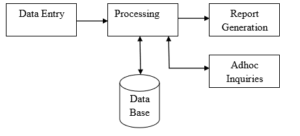
Five Stages of Transaction Processing System
Management Information System (MIS)
These are primarily involved with inner sources of knowledge. MIS often take information from the transaction processing programs and summaries it right into a collection of administration reviews. Therefore MIS gives info for managing a corporation. Info from MIS helps managers to observe and direct the organization.
Decision-support systems (DSS)
These are specifically designed to help management make decisions in situations where there is uncertainty about the possible outcomes of those decisions. DSS comprise tools and strategies to help gather relevant information and analyze the options and alternatives. DSS often involves the use of complex spreadsheet and databases to create “what-if” models Finley et al.
Executive Support System (ESS)
This is designed to assist senior administration make strategic selections. It gathers analyses and summarizes the key internal and external information used in the business. A great way to consider an ESS is to think about the senior administrative staff in a plane cockpit with the instrument panel displaying them the standing of all the important thing business actions. ESS sometimes includes numerous information evaluation and modeling instruments similar to “what-if” evaluation to assist strategic decision-making.
Application of Reservation Systems
Computer Reservations Systems (CRSs) are used for hosting airline seat inventory and seat reservation transactions. Originally designed, owned and operated by airlines, the use of CRSs had been extended to travel agents as a distribution tool. Over the years CRSs have evolved into Global Distribution Systems (GDSs) that host inventory of multiple airlines and other modes of travel and travel related associated services such as room reservation, ticket reservation systems for football games, train reservation for reserving train seats and many more others Nasim (2010).
Advantages of Reservation Information Systems
Convenience
One advantage of booking a lodge, flight or automotive rental online is the convenience. With the ability to make all of your travel plans on the internet means you are able to do it any time of the day or night time at residence, or while you’re in your lunch break on the workplace. Prospects on the go may even make reservations on their smartphones or tablets. There is no such thing as a want for prolonged telephone calls or visits to a travel company, with only a few minutes and a click on of the mouse, you’ll have all of your plans finalized.
Changes and Cancelations
It’s easy for travelers to vary or cancel online reservations. As a substitute of calling the lodge or airline and ready for a customer support consultant that can assist you by means of the method, booking online means you are able to do it wherever you’ve got internet access.
Customer Reviews
Making a reservation over the telephone or at a travel agency doesn’t assist you to take a look at what previous clients have considered lodge chains or sure airlines. One other profit of constructing online reservations is having the ability to see these customer reviews.
Methodology
The methodology describes the procedures, tools, methods that had been employed to realize the particular targets of the airline reservation system for Rwenzori Airlines. The event of the System was based mostly on the model below. It concerned requirement willpower, requirement evaluation, system design, implementation, testing, and validation. This strategy below describes the sequence of steps involved.
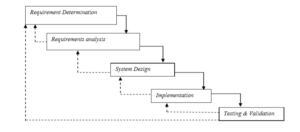
System Study and Analysis
This was carried out on the prevailing system. It helped to indicate the weaknesses of the prevailing system. The researcher used varied strategies to gather details about the present system as proven below.
Interviews
These had been carried out on Rwenzori Airlines‟ employees who’re the present users of the system in use. These had been about how prospects book particular seats on flights, how customer knowledge and Necessities info is saved and the way flight scheduling and administration is finished. A set of interview information was designed by the researcher these questions guided the researcher throughout the interview.
This method had the following advantages;
i. The researcher was exposed to firsthand info from the present directors of the present system; this helped the researcher to get the texture of the present system.
ii. The researcher was in a position to ask to comply with up questions and this helped him to achieve extra perception into the present system.
Disadvantages of this method
i. This methodology was time-consuming and tiresome because it concerned interviewing an enormous variety of Rwenzori Airlines‟ employees.
ii. A few of the interviewees didn’t present up for the interview.
Due to these disadvantages, the researcher used the second methodology to be able to higher perceive the present system.
Questionnaire
The researcher used the questionnaire to collect info from prospects or customers who would come to the airline head workplaces to book and verify in when their flights are due. The researcher used each a mix of open-ended and closed questionnaire. The respondents had been requested to tick their selection from a given variety of decisions. Additionally, the respondents had been requested to explain the present system in their very own phrases. The questionnaire was distributed and later picked after they had been already answered.
Advantages of this method were;
i. It resulted into a variety of views from completely different users in regards to the system in use and this higher helped the researcher to completely perceive the present guide system.
ii. This methodology offered clear thoughts info in regards to the present system and this helped the researcher in understanding totally the weaknesses of the present system in use.
However, this method had its disadvantages and these were;
i. Some handwriting was unreadable.
ii. Some views deviated from the query.
Requirements Determination
The requirement willpower concerned the gathering of details about how the system ought to function. The necessities willpower exercise was essentially the most difficult part of system analysis. It concerned gathering and documenting of the true and actual necessities for the system being developed. In here the researcher was primarily pondering and making an attempt to reply the query, “What should the system do?” This info was used to determine the customers‟ necessities and the system specifications.
Requirements Analysis
The first purpose of this part was to create an in-depth Practical Specification defining the total set of system capabilities to be applied, together with accompanying data and process models illustrating the data to be managed and the processes to be supported by the brand new system.
It concerned an examination of the collected data. Models similar to Data Flow Diagrams (DFD) and Entity Relationship Diagrams (ERD’s) had been used to model individual processes and data respectively. Beneath right here necessities had been labeled as purposeful and nonfunctional necessities, the willpower and evaluation of necessities helped the researcher to attain his second goal.
System Design
This confirmed the application of system concept to product growth by defining the structure, parts, modules, interfaces, and data for a system to fulfill specified requirements. The purpose of design part was not simply to supply a design for the system; as a substitute, it was to search out the very best design throughout the limitations imposed by the requirements and the bodily in addition to the social growth wherein the system was to function Stair, (1996).
The system design process was divided into logical, model of the system was developed indicating all of the important steps the system growth went by way of. Right here, the researcher used case tools like flowcharts and data flow diagrams. The conceptual design was an outline of the proposed system by way of a set of built-in concepts and ideas about what it ought to do, behave, and appear like, that was comprehensible by the users within the method meant. The Bodily design was the bodily realization of logical design. Tables, types, and reviews had been created and relationships outlined amongst these tables and safety constraints set throughout the bodily design the researcher translated the anticipated schemas into precise database buildings. In right here the researcher achieved his third goal.
System Implementation
This concerned placing collectively or constructing varied components of a system, for instance, Mysql/PHP for database Wamp Server for hosting Web pages. That is the stage wherein the precise system was acknowledged. The technical structure outlined in the design stage was the baseline for creating the system. The interface ware designed utilizing HTML, PHP, and Java script languages. It is because these languages provided tremendous friendly user interfaces; that’s easy to learn and reasonably priced. The database was designed in MYSQL basing on Wamp Server software program. MYSQL offers an excessive stage of safety to the database, that’s, an authentication which may both be throughout the logging into the database or on DML instructions similar to delete, add and even edit, it additionally reduces redundancy. In right here the researcher achieved his fourth goal.
System Testing
This concerned testing the system to be able to appropriate errors or take away defects that rose. This stage concerned testing the supply code to be sure that it produced the anticipated and desired outcomes when subjected to a set of predefined circumstances. It was subdivided into three main phases, that’s, unit testing, system testing, and user acceptance testing.
Under unit testing, particular elements of the supply code had been examined. Emphasis was placed on the website-database connections to make sure that info despatched by a user from the online web page type reaches the system’s database.
System testing involved putting the entire software to test in order to find out whether or not the functional requirements of the system had been efficiently and effectively integrated and satisfied.
Finally, User acceptance testing was performed; this was a key issue for the success of the system efficiency. The system into consideration was examined for user acceptance by continually protecting in contact with the system customers that’s the airline prospects and employees.
System Validation
The system was utilized by completely different prospects to book seats and by completely different employees to schedule airplanes. And certainly the seats had been reserved and flights schedules had been on time. This helped the researcher to attain his final goal.
System Analysis, Design and Implementation
This part describes the tools that have been used to develop and implement the system. These embrace the context diagram, stage zero, and one data flow diagram. These tools helped in designing the system and developing with the principle idea and logic of the system. As soon as data programs improvement progressed to the design actions, the researcher who was on the similar time programs analyst and programmer centered his consideration on the query, “How does the system do what it is supposed to do?”
System Design Objectives
The Airline Reservation System (ARS) is a software program software to help an airline with transactions associated with creating ticket reservations, which incorporates blocking, reserving, canceling and rescheduling tickets.
From the viewpoint of the airlines, the system provides the following
1. The system ought to decrease repetitive work carried out by the system administrator and reservation clerks.
2. The system ought to preserve customer information in case of emergency, e.g. flight cancellation attributable to inclement climate.
3. The system ought to decrease the variety of vacant seats on a flight and maximize flight capability utilization.
4. The system ought to reduce effort and frustration for travelers in scheduling a trip, particularly by lowering the search effort for the flight they should take.
5. The system ought to make it simple for travelers to test the ticketed standing or make adjustments to their trip.
System Design
This was divided into a Logical, conceptual and physical design.
Logical design
In this case, the logical model of the system was developed indicating all of the very important steps the system improvement went by means of. On this, the researcher used case tools like flowcharts and data flow diagrams. These model have been very important for the improvement of the system. This stage included the graphical user interface design, enter design through which the user inputs in data, the output design which shows the outcomes of what a user can have entered, and database design the place data is saved for simple administration. These designs supplied the technical blueprint from which the system was constructed. A mixture of structure instruments akin to hand sketches and CASE tools have been used to give you each enter and output designs. Database design was based mostly on the Relational data model and the database administration system employed was MySQL.
Conceptual design
This was an outline of the proposed system by way of a set of built-in concepts and ideas about what it ought to do, behave, and appear to be, that might be comprehensible by the users within the method supposed. The method has begun with figuring out the entities required by the customers after which figuring out all of the essential relationships that exist between the entities. The consequence was the model of the user interface that has been developed.
Physical design
This was the physical realization of logical design. Tables, forms, and reports were created and relationships defined among these tables and security constraints set. During the physical design the researcher translated the expected schemas into actual database structures and at this time, he had to map:
i. Entities to tables.
ii. Relationship to foreign key constraints.
iii. Attributes to columns primary unique identifiers to primary key constraints.
iv. Unique identifiers to unique key constraints.
v. Attributes to columns.
The system has been developed on the following requirements;
Functional Requirements
The following requirements were captured for the intended use of the system.
User account
The registered user can directly do the booking of flights and if there is a new user he may register or he only sees the flight details. But for the reservation of the ticket, he must register first.
Creation of a new user account
When there is a new customer he should fill the form containing field like Name, Address, and Contact No. , Gender, Email_ id, Age and also User_Id and Password.
Checking Availability
To check the available flight the user should input the origin city and destination city, date of journey.
Reservation of Flight
After providing all the information the system will ask a user for confirmation. After confirming the information the seats get reserved.
Canceling / Rescheduling of Ticket
To cancel the reservation the customer should provide the details about Ticket no and flight no.
Non-functional requirements
The application was designed to fulfill the following non-functional requirements.
Performance Requirements
Performance of the system is dependent on the bandwidth of the internet and also the hardware itself.
Security Requirements
There is only one authorized person who can see the Confidential Information. The information of the customer is only available for the administrator.
Software Quality Attributes
The system is very user-friendly, interoperable and flexible.
Data Flow Diagrams
Symbol Description for data flow diagram

Symbol Description for the Entity Relationship Diagram
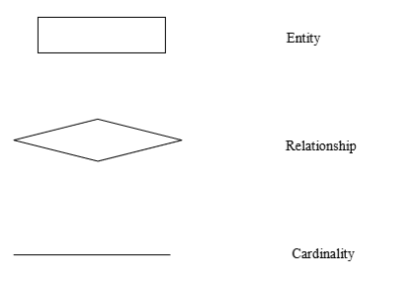
Context Diagram for Airline Reservation System
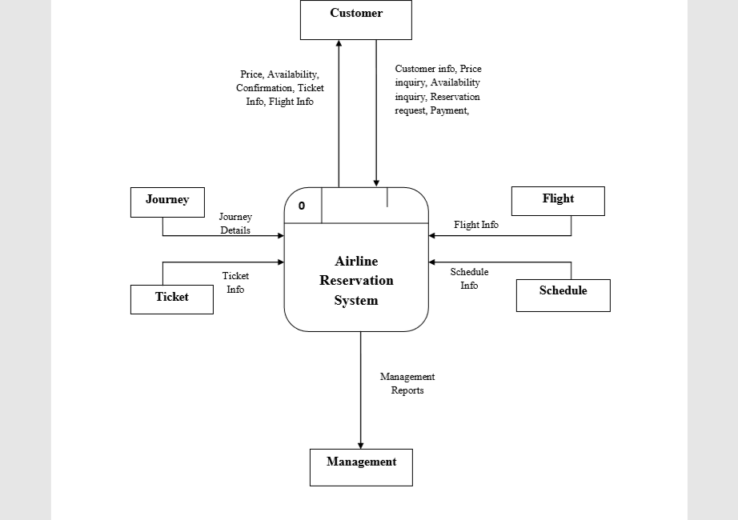
Level One Data Flow Diagram for Reservation Process
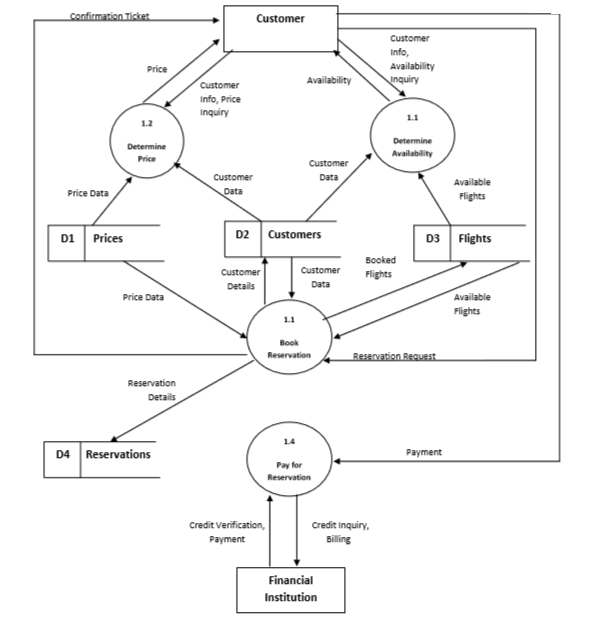
System Component Interactions
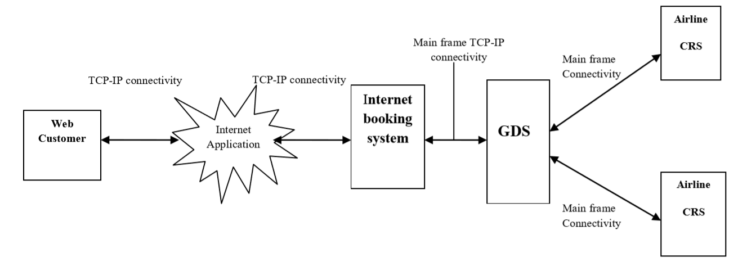
Database design
Under this section, the various entities, their corresponding attributes and data types, as well as the relationships among them were defined based on the user requirements. It also involves the construction of a suitable data model for the system.
Entities
a. Passenger (customer)
The person who is booking for purposes of travel
b. Flight detail
The airplane to travel in
c. Journey details
The details of the planned destination
d. Ticket details
The details of the ticket
e. Schedule details
Details of the journey schedule
Entity Relationship Diagram for Airline Reservation
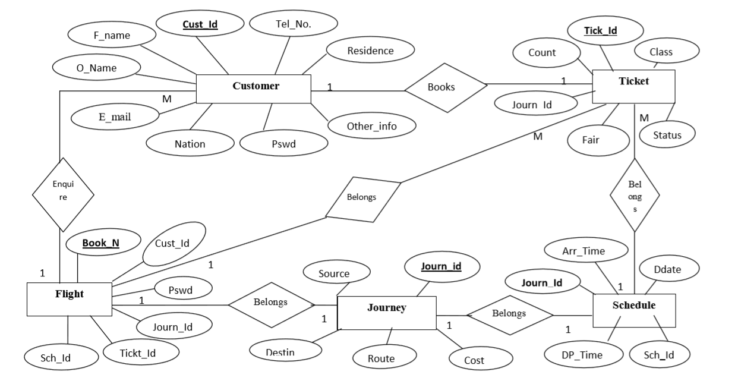
Database Conceptual Design
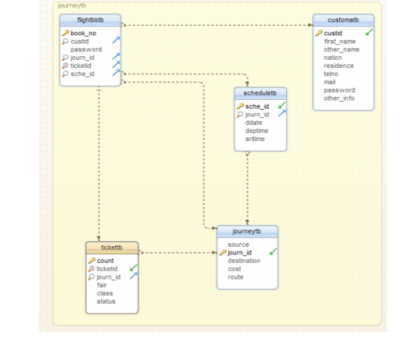
Table Attribute Description (Physical Design)
Customer’s table
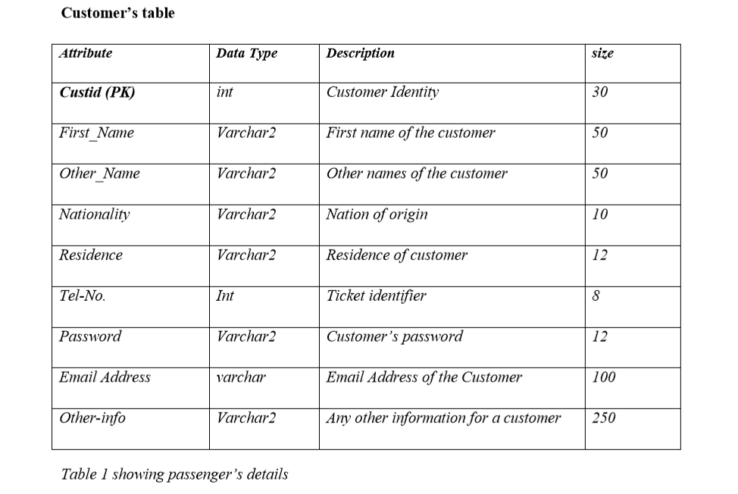
Flight table

Ticket table
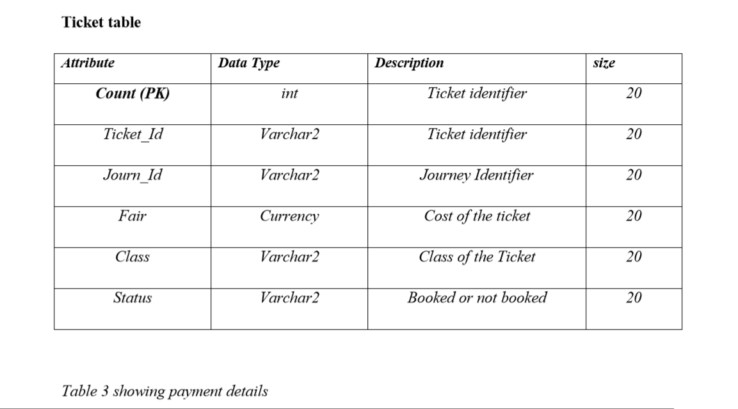
Journey Table
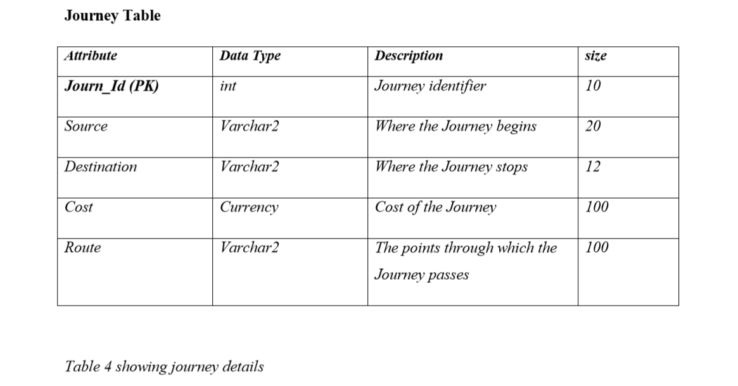
Schedule Table
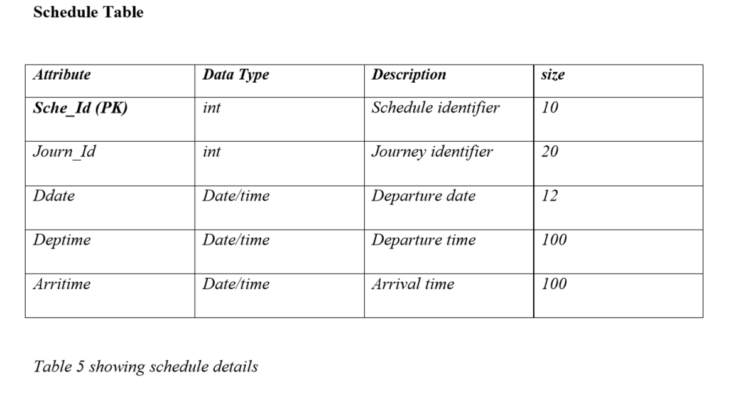
System implementation
The ARS provides the following types of easy-to-use, interactive, and intuitive graphical and telephonic interfaces.
- The ARS provides an easy-to-use, intuitive Graphical User Interface (GUI) as part of the Administrator‟s working desktop environment.
- The ARS also provide an interactive Graphical User Interface, on the World Wide Web for the general customers.
The system working scenario is as follows:
- The customer should register himself in order to proceed to book ticket service.
- The customer needs to input all the required particular details during the registration process.
- Upon successful login, the customer will be registered officially to the web service and he can log in using his username and password.
- The guest is only permitted to check flight availability.
System Users
Administrator
This is the person charged with the responsibility of updating system content.
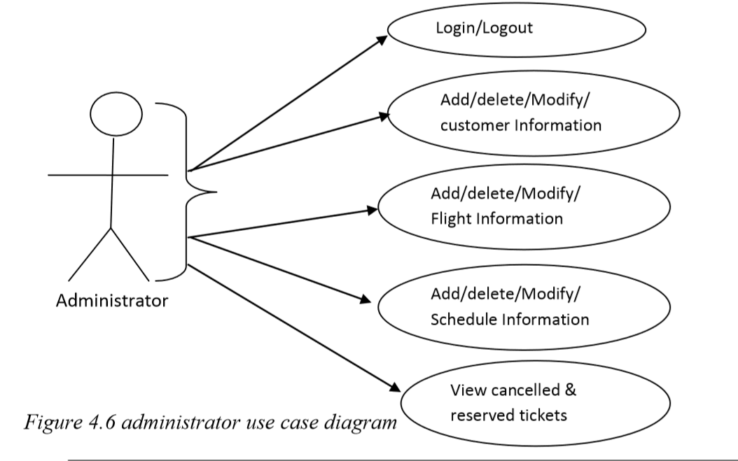
Customer (Registered user)
The person who accesses the system from the user point of view.
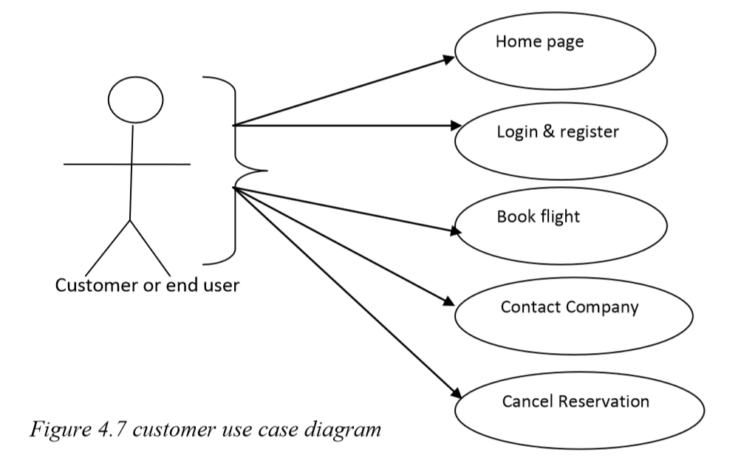
Guest User
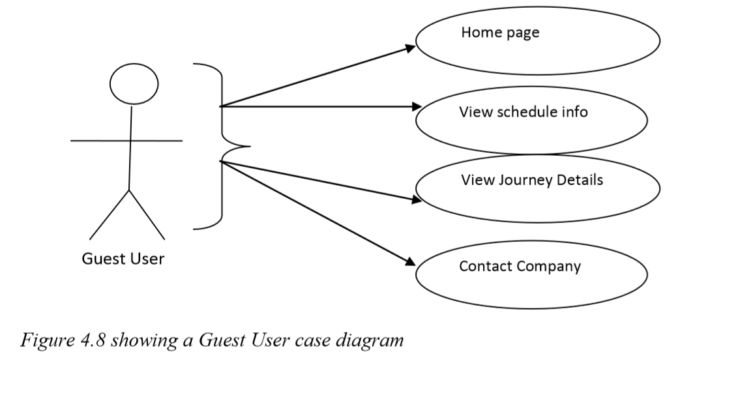
Implementation Requirements
The implementation requirements depend on the system specifications. These are the hardware and software requirements that the system runs on. The system supports all Pentium III clients and above computers, operating systems, Linux, Windows NT, Mac with 512 MB of RAM, at least 10GB of hard disk space and a 550 MHZ of the processor speed. The client computer must have internet connectivity to have access to the web server through TCP/IP.
The system should be installed on any server computer running on either Linux or windows architecture. The server should have at least 10 GB of RAM and I Terabyte of storage space and run on processor speed of at least 10 GHz.
System Execution Sequence
This is divided into two, User‟s environment and Administrator environment.
User’s environment
a) Welcome Page
This appears when the URL of Rwenzori Airlines is typed in any browser. While on this page customers can choose to register and continue to book tickets and flights or view flight schedules, journey details and access the contact us page. However for a user to book a ticket or a flight, he/she must be registered first.
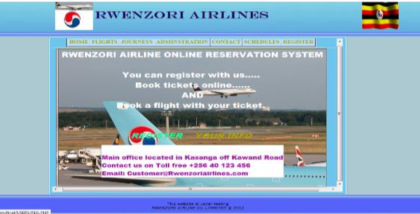
b) Registration Form
This form is utilized by clients (Passengers) to register earlier than booking a flight or ticket. The person should first register. To entry this web page the client clicks on the register link on the home page. The customer Id and password fields are mandatory, which implies the client must fill them earlier than including the document.
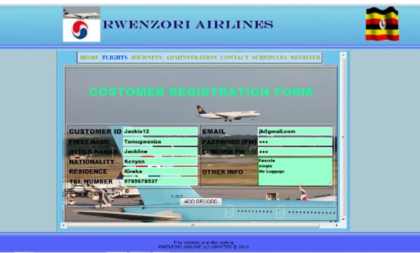
c) Customer Search Form
This interface is accessed by clicking in your information link on the home page. On this interface, the client is required to enter his or her id and password to seek out his/her document. This document offers detailed info of what was entered throughout registration; it additionally gives any booking and flight info if any.

d) Customer Search result Interface
This interface is as a result of a successful search for a customer record. This interface accommodates all the data that was entered throughout registration and some other flight, ticket, schedule and journey info in case the client had already booked a flight. This interface is accessed by getting into the right customer id and password and clicking on discover document.
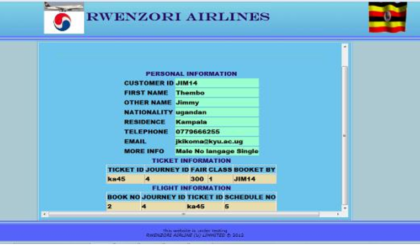
e) Journey Interface
This interface is accessible by both registered and non-registered users to view the journey details. It‟s accessed by clicking on the Journeys link on the top menu of the system. While on this page both registered and non-registered users can view Journey details and for purposes of booking the users are required to note the Journey Id as it will be required in case the user wants to book a ticket and a flight. This interface shows the Journeys that Rwenzori Airlines will take on a specific day and date.

f) Schedule details Interface
This interface is accessible by each registered and non-registered customers to view the schedules for Rwenzori airlines on a selected date. It’s accessed by clicking on the schedules link on the highest menu on the system. Whereas on this pages customers are required to pay attention to the schedule Id as it will likely be required in case a person is to guide a flight or ticket.
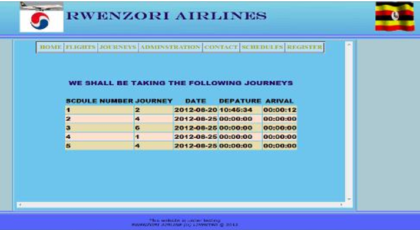
g) Flight/Ticket/Cancel Form
This interface is accessed by clicking on flights link on the top menu on the system. This Interface is accessed by users who want to book ticket, flights and those who have already booked but want to cancel their flights. For purposes of booking the user must be registered and should have in mind the Journey Id for the Journey he/she wants to take as well as the schedule Id as this is required during booking.
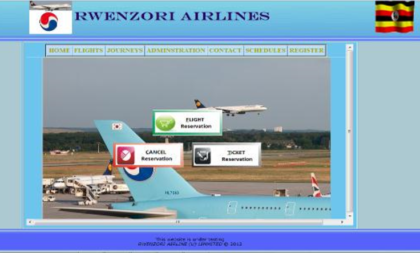
h) Flight Booking Form
This accessed by clicking on Flight reservations on flights web page/interface. This kind is utilized by the registered clients to guide a flight, a registered. All fields on this form are necessary therefore the user is predicted to fill all of the fields.
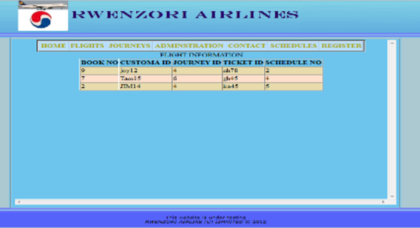
i) Ticket Booking Form
This interface is accessed by clicking on the ticket Reservations link button on the Flights web page. This form is utilized by registered clients to guide and reserve tickets. All fields on this web page/form are necessary and therefore the user is predicted to fill all of them.
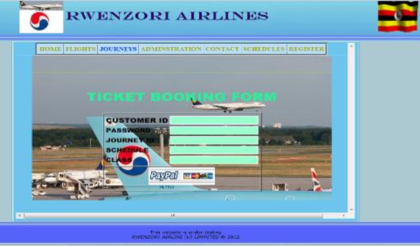
j) Ticket Detail Interface
This interface appears after a successful ticket booking process. The user is required to note the ticket Id as it will be required during Flight booking.
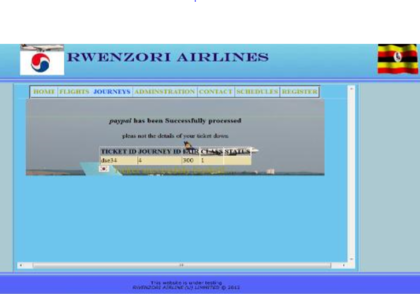
k) Ticket Cancelation Form
This form is accessed by clicking on the cancel reservation button on the flight’s page. This form is used by customers who had already booked a ticket to cancel their ticket in case they want to do so. To achieve this customer will be required to provide his Id and Ticket Id that had been provided during booking.
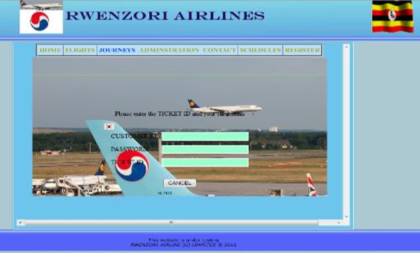
l) Contact us page/Interface
This interface is accessed by clicking on the contact link on the system menu. As specified in the project scope that the Rwenzori Airlines system will have a page dedicated to user quarries. On this page, a customer or user whether registered on not can post anything for which he/she is not satisfied. Information sent here will be received by the administrator and presented to Rwenzori Airlines management for consideration. Fields with * are mandatory hence must be filled before the user can post his or her comment.
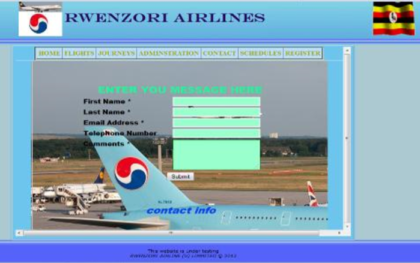
Administrator Environment
This is a restricted environment; it is used by the administrator to change system content. It‟s accessed by clicking on administrator link on the system menu. Access to this environment requires an admin password. Once the correct admin password is entered the person will have access to modify/ delete and all control of the system.
m) Admin Password Interface
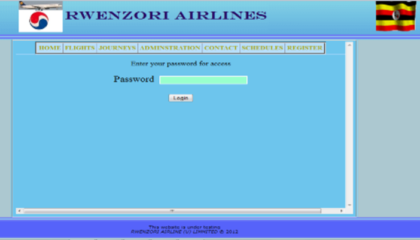
n) Administrators Home Interface
This is the administrator‟s home interface; it‟s accessed when a correct admin password is entered in the interface above. Once on this interface, the administrator can schedule flights, edit ticket information, change passwords, update journey details, schedule details, change database passwords and control every aspect of the system.
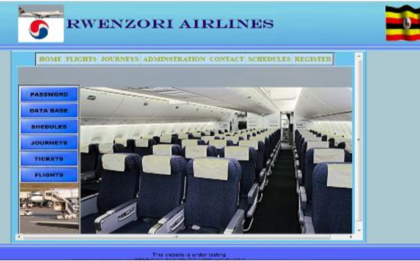
o) Change Password Interface
This interface is accessed by clicking on Password button on the administrator‟s home interface. This interface is used by the administrator to modify passwords. To modify the password the administrator must provide the old password and then feed in the new password.
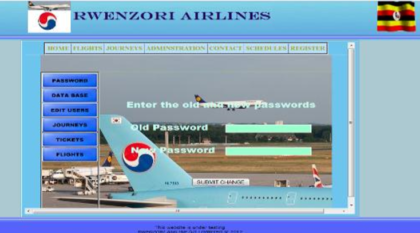
p) Database Interface
Used by the administrator to test configure and creates databases for the system. It‟s accessed by clicking the database button on the administrator‟s home interface.
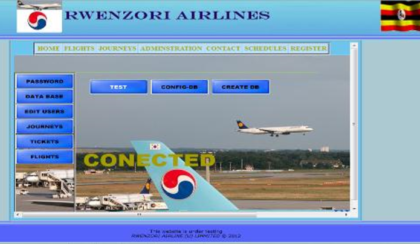
q) Add Schedule Interface
This interface is used by the administrator to add flight schedules in the system. Schedules added here can then available for booking by the customer. In here the administrator can add a new schedule or update an existing schedule.
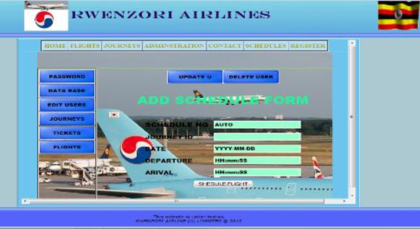
r) Journey Entry Form
This is the form used by the administrator to add journeys into the system. Journeys added here can then be available to customers for booking. This form can as well be used to update, delete and view journey and their details.
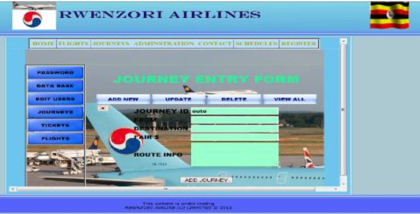
s) Ticket adding form
This form is used by the administrator to add tickets to the system; Tickets added here can then be available for booking by the customers. It can also be used for viewing booked Tickets, update ticket information and delete tickets.

t) Flight Information Interface
This interface is utilized by the administrator to view booked schedules, Tickets, Journey, and flights. This interface provides a file of what has been booked and what’s still available.

Findings, Conclusion and Recommendations
Findings
The researcher‟s findings are summarized in the following paragraphs below;
Today Airlines are under unprecedented pressure to produce economic results or perish as fuel, labor, and asset costs escalate and demand declines. The International Air Transport Association (IATA) reports that the airline industry lost more than US$9 billion in 2009. In fact, with the exception of a few years and a few airlines, much of the industry has not produced a return on investment that exceeded capital costs and this is as a result of the use of traditional flight management methods still used by most airlines today.
As the researcher found out with the industry poised for recovery, competition is expected to intensify as low-cost carriers continue to gain market share from full-service carriers by attracting both leisure and business segments. Reduction in business-class travel outpaces that of leisure travel by four to one and is a direct result of corporate belt-tightening and the emergence of travel substitution technologies, such as collaboration applications, high-definition video conferencing, and telepresence.
Adding to these challenges, new operating models, innovative entrants, and further airline consolidation will create new difficulties and intense competitive pressure for legacy carriers. In response, airlines are employing a narrowly focused near-term strategy including reductions in seat capacity and product unbundling (for example, paying extra for a window or aisle seat, or for more exit-row legroom) that could potentially have serious long-term consequences on customer loyalty, experience, and profitability from core products.
The researcher also found out that as global economies begin to show a sign of recovery, so, too, is the aviation industry. Industrywide opinion, however, is that business will not immediately return to pre-crisis levels. Notwithstanding anticipation of an economic rebound, some airlines are beginning to shift their strategies. Rather than fixate on saving the “sinking ship,” airlines are repositioning their organizations to compete in the age of “the new normal” by seeking innovative, new service opportunities and business models. The future success of an airline will be decided, in part, by its ability to harness emerging technologies to deliver superior customer experience and engender loyalty while empowering employees and improving operational efficiencies. The timing could not be better: new products and innovations in mobility are emerging as one of the most promising areas for airlines to transform their business models and operations.
Conclusion
Before modern computing, the reservation system was done using manual means. This meant that a person about to travel had to spend a lot of unnecessary time waiting in queues in order to book their tickets. The manual process of a reservation was also prone to human errors, which lead to a lot of dissatisfaction amongst travelers. Nowadays competition is so fierce between airlines that there are a lot of discounts and a lot of luxuries given to customers that will give an edge to that particular airline. The online airline reservation automates these processes of booking airline tickets online, thus reducing the time wasted as well as the errors that are involved in the manual process. People will argue that online airline reservation system is expensive, and create unfair competition between other airlines that don‟t have them.
From the researchers view, online airline reservation is one the best innovation that has taken place in the airline industry and those companies that have not yet embraced airline reservation system ought to lose out, they may sight, additional costs, maintenance cost and the cost of development as their drawbacks but as Henry R. Luce (2001) [10], put it “Business, more than any other occupation, is a continual dealing with the future; it is a continual calculation, an instinctive exercise in foresight” World Wide Web and the Internet is here and airline companies for the future will seize this opportunity develop airline reservation systems and prosper.
Conversion
The method of conversion will be parallel conversion where the developed system will be run in parallel to the current system. Those customers who can book online can start doing so and those who can come to the airline offices can still book their ticket using the manual system. This will be done for a period of six months after which all the operation of the airline will be shifted to the online system.
Recommendations
The researcher recommends the following about the system:
- The researcher recommends that the directors and workers of Rwenzori Airlines be educated on the right way to use the system, thus enabling them to grasp the performance of all the system.
- More research on this system is required to totally determine and remove a number of the weaknesses and combine it with banks to allow online fee.
- There is a need for the system upgrade as user‟s requirements change. User requirements differ with time, therefore, it is of great help for the system to be flexible enough.
- Other researchers can use this project report as a basis during the future study of reservation system say in train reservation systems.
- Owing to the ease and comfort of Airline Reservation Systems, local flights which are not on the system should be encouraged to compensate the system.
- The system ought to be made reasonably priced in order to encourage consumers and travel agents on patronizing the system.
- However much system access is protected by a username and a password, the entire computer system should be protected from unauthorized people to avoid misuse and damage of the system components.
- The users should carefully choose usernames and passwords so as to avoid a security breach of the system hence they shouldn’t have short passwords, using their friends or relatives‟ names as passwords.
- Backups should be done frequently to avoid data loss in case of hardware or software malfunction

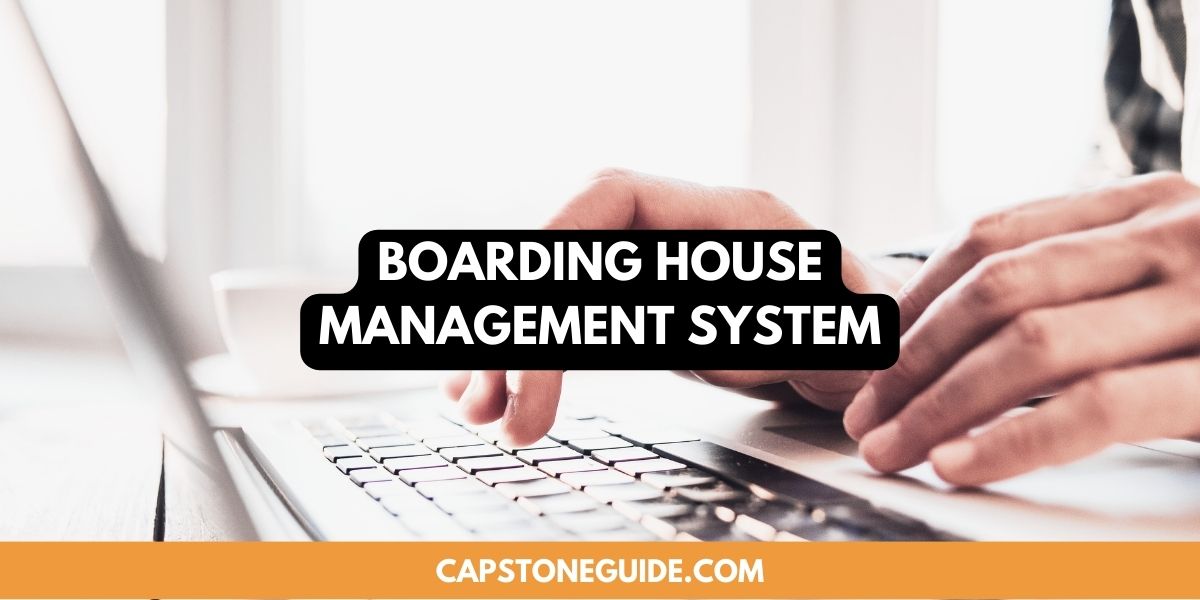


Leave A Comment
You must be logged in to post a comment.